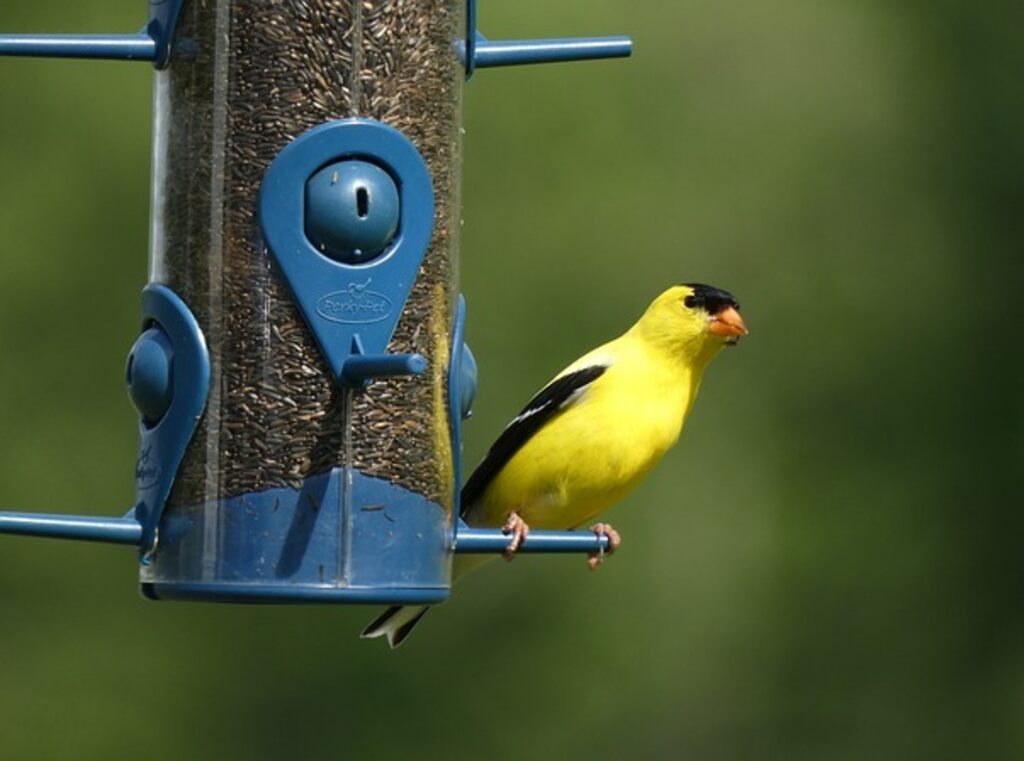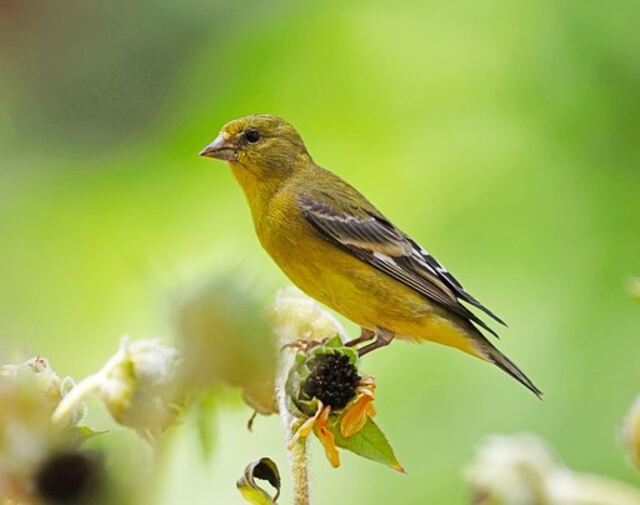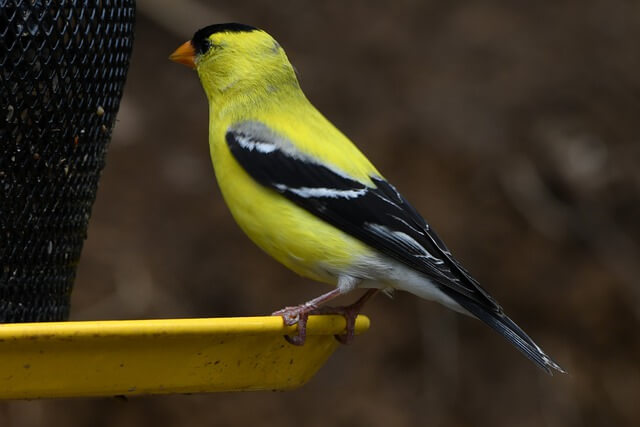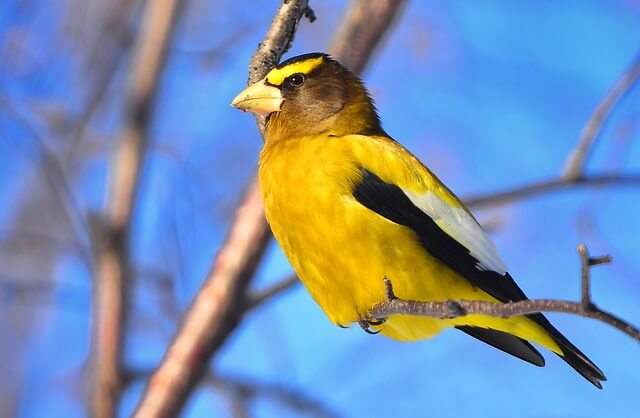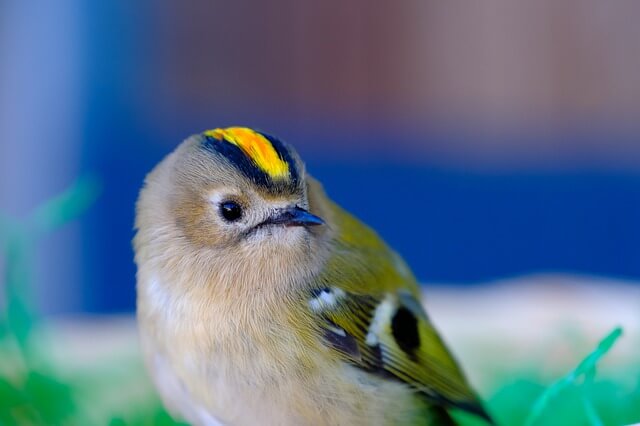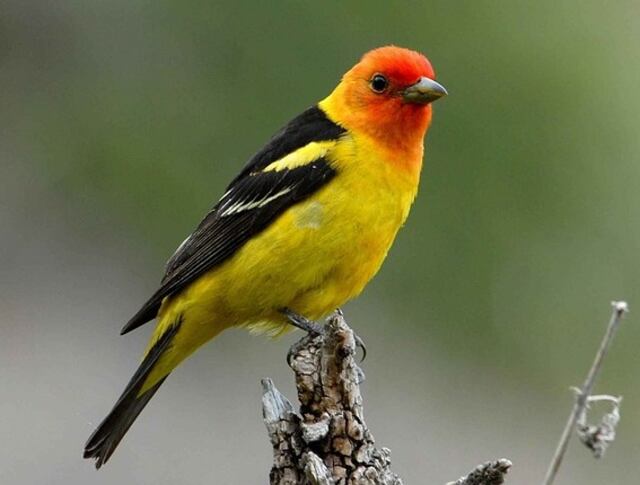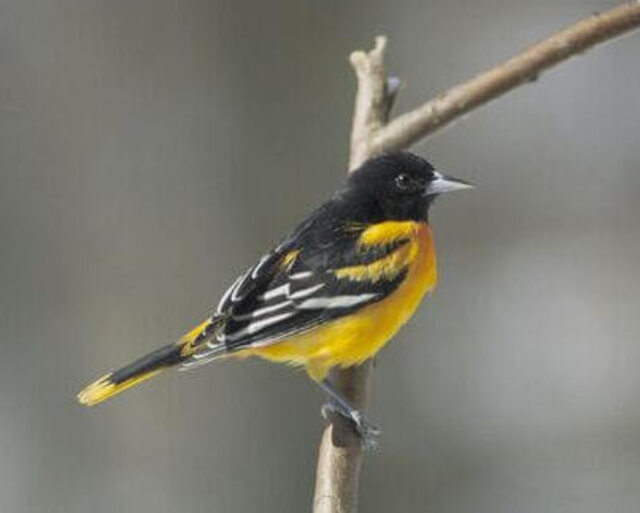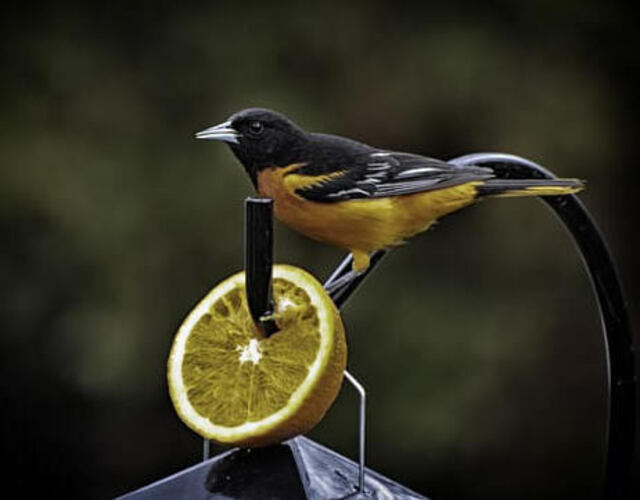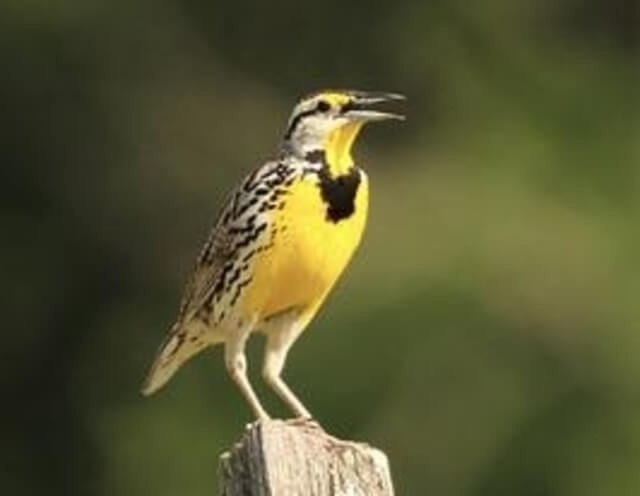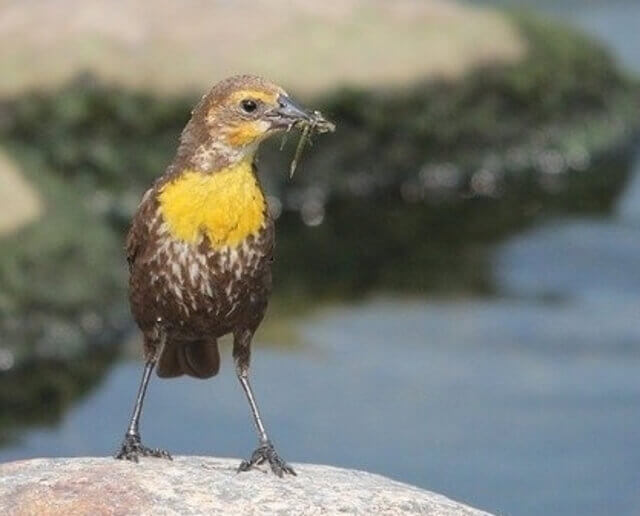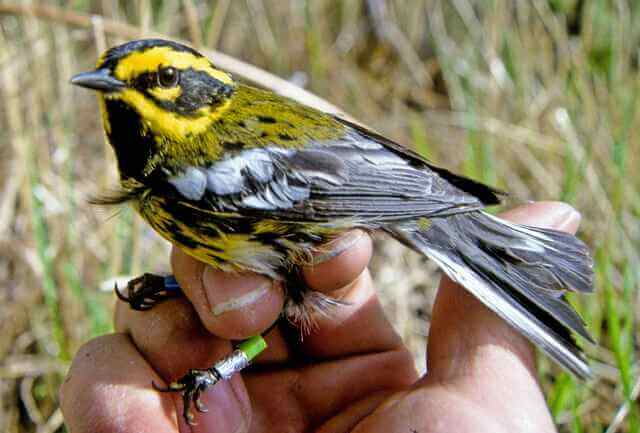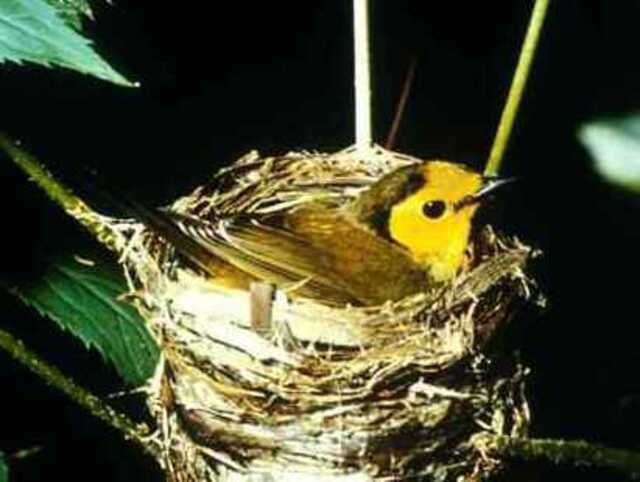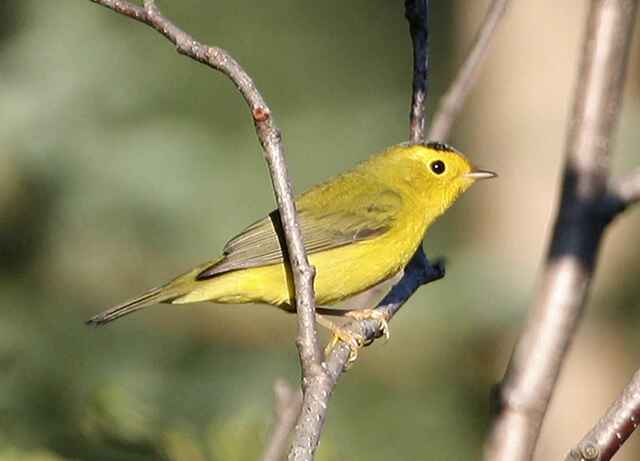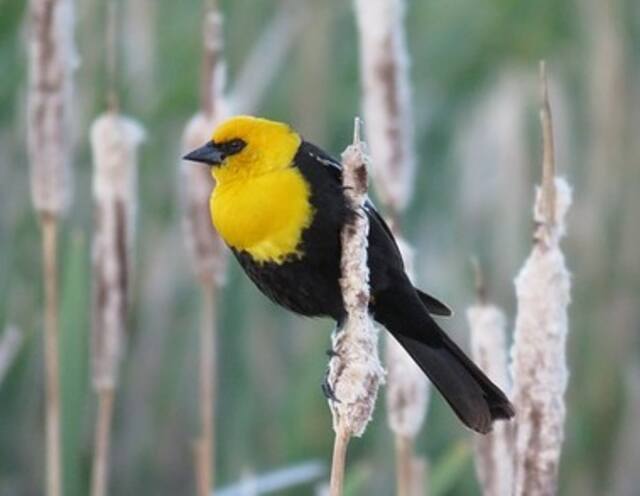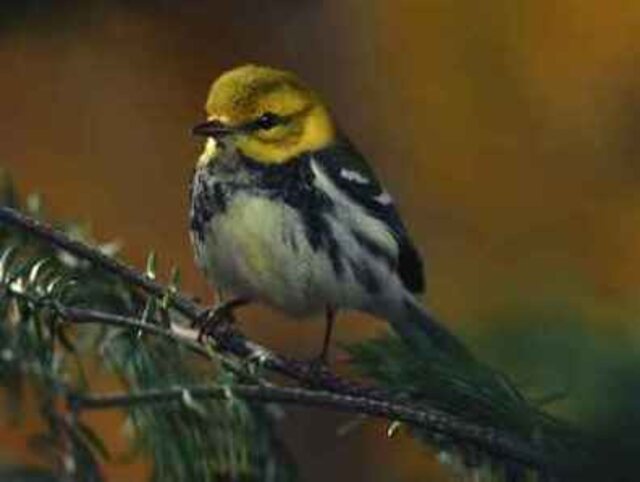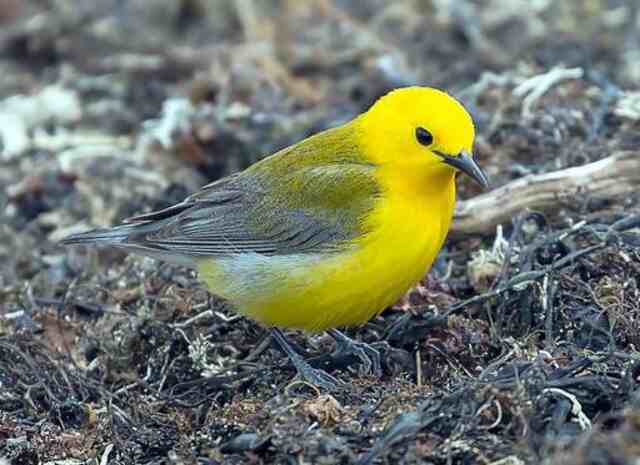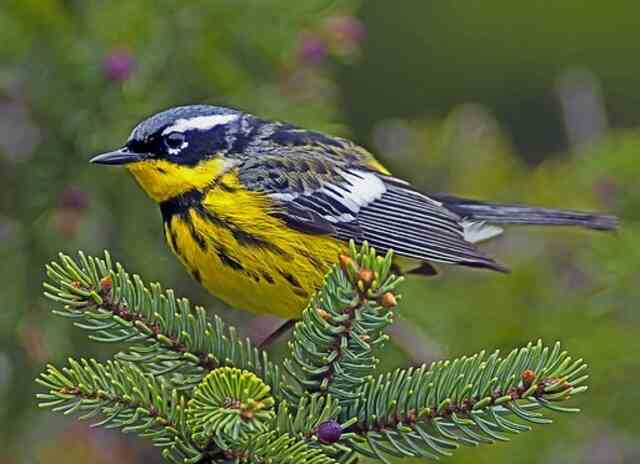Birdwatching is a delightful hobby that brings you closer to nature’s vibrant beauty. Among the most striking birds are those adorned in bold yellow and black plumage. In this article, we showcase 20 stunning yellow and black birds that captivate bird enthusiasts and nature lovers alike. From the elegant Goldfinch to the striking Baltimore Oriole, each bird on this list is a marvel of avian beauty. Join us as we explore these magnificent creatures and their unique features.
Table of Contents
- 1 Types of Yellow and Black Birds
- 1.1 Lesser Goldfinch
- 1.2 American Goldfinch
- 1.3 Evening Grosbeak
- 1.4 Golden-crowned Kinglet
- 1.5 Western Tanager
- 1.6 Orchard Oriole
- 1.7 Scott’s Oriole
- 1.8 Hooded Oriole
- 1.9 Eastern Meadowlark
- 1.10 Western Meadowlark
- 1.11 Townsend’s Warbler
- 1.12 Hooded Warbler
- 1.13 Wilson’s Warbler
- 1.14 Yellow-headed Blackbird
- 1.15 Common Yellow-throat
- 1.16 Black-Throated Green Warbler
- 1.17 Audubon’s Oriole
- 1.18 Prothonotary Warbler
- 1.19 Magnolia Warbler
- 1.20 Baltimore Oriole
- 2 Author
Types of Yellow and Black Birds
Lesser Goldfinch
- Length: 3.5-4.3 in (9-11 cm)
- Weight: 0.3-0.4 oz (8-11.5 g)
- Wingspan: 5.9-7.9 in (15-20 cm)
- Scientific Name: Spinus psaltria
- Habitat: The Lesser Goldfinch is a small bird that primarily inhabits areas with dense vegetation, such as woodlands, pastures, and shrublands. They are often seen in proximity to water sources, as they enjoy bathing and drinking.
- Diet: It feeds predominantly on seeds, but also eats buds, flowers, and fruit berries.
- How to Attract: Try out a tube feeder with sunflower seeds, as this is an especially popular choice among these birds. Thistle is another great seed option, as they love its bitterness. Nyjer is also a favorite food of the Lesser Goldfinch, so make sure to include some in your feeders too!
- Distribution: Range Map and Sightings Map
- Common Sounds: Songs and Calls
Description: The Lesser Goldfinch is a small, yellow bird that resides in the West and Southwest regions of North America, primarily living on mountain ranges. The lesser goldfinch is only found in regions like California and Arizona but can also be found in parts of Texas, Nevada, New Mexico and Utah.
They are very common throughout these areas and can often be seen in groups of about five or six birds. This bird measures 4.3 inches from wingtip to wingtip and the male has a body that is an olive green, a yellow belly, and black wings with white patches. The female goldfinch’s plumage is remarkably similar, but quite a bit duller.
American Goldfinch
- Length: 4.3-5.1 in (11-13 cm)
- Weight: 0.4-0.7 oz (11-20 g)
- Wingspan: 7.5-8.7 in (19-22 cm)
- Scientific Name: Spinus tristis
- Habitat: It occupies a range of habitats from rural areas to heavily urbanized areas. In warm weather areas it prefers open country with scattered trees and other vegetation, but in colder regions it will inhabit city parks and gardens.
- Diet: They feed primarily on seeds, buds, flowers, and fruit berries.
- How to Attract: Goldfinches are a beautiful bird and can be very sociable. They enjoy the company of other birds, so if you want one to visit your yard, you’ll need to provide them with some sort of food source. One option is a tube feeder with sunflower seeds. This will allow the goldfinch to come close enough to see and eat, but will also keep them safe from predators. You can also try using thistle or nyjer as food sources, as they are both popular with these birds.
- Distribution: Range Map and Sightings Map
- Common Sounds: Calls and Sounds
Description: American Goldfinch is a bird that can be found in North America, Mexico and the Caribbean. It is characterized by its bright yellow body with black wings and white under tail coverts. The males are slightly brighter than females, but otherwise they look very similar to each other. They have black spots on their wings that sometimes appear as lines or stripes of white feathers.
This beautiful bird can be seen around gardens, fields, woodlands and parks during springtime when they feed on seeds from plants. These birds are typically between 4.3 and 5.5 inches long with an average wingspan of 7.5 to 8.5 inches and weight of 11-20 grams, though there can be some variation depending on sex or age, with males being larger than females.
Evening Grosbeak
- Length: 6.3-7.1 in (16-18 cm)
- Weight: 1.9-2.6 oz (53-74 g)
- Wingspan: 11.8-14.2 in (30-36 cm)
- Scientific Name: Coccothraustes vespertinus
- Habitat: The Evening Grosbeak is a migratory bird that can be found in many different habitats. They are commonly found in open areas such as fields, meadows, and parks. They also like to live near humans and will often perch on top of buildings or other structures.
- Diet: The diet of the evening grosbeak primarily consists of seeds, but they also consume some berries and insects. The birds are thought to prefer the smaller seeds, such as those from sunflower plants, over those from larger varieties. Insects make up a significant portion of their diet; small bugs that can be found on the ground or in bushes are especially common. Evening grosbeaks will also take advantage of occasions when other birds are feeding their young, raiding their food supplies.
- How to Attract: The Evening Grosbeak is a bird that loves to feed on seeds. There are many ways to attract this bird to your yard, and some of the most popular include hopper feeders, tray feeders, and tube feeders with black-oil or striped sunflower seeds. Cracked corn can also be a great food source for them.
- Distribution: Range Map and Sightings Map
- Common Sounds: Calls and Sounds
Description: The Evening Grosbeak is a small song bird of the woodlands. It can be found in coniferous and mixed forests across southern Canada and the mountains of the western United States. These birds have a bright yellow forehead and body, with brown head, large white patch on the wing. The length of an adult can range from 16-18 cm (6.3-7.1 in) with wings spanning 30-36 cm (12-14 in).
These brightly colored little birds feed mostly on insects and berries during their breeding season from April to July; they will switch over to seeds as their main food source. In our northern forest they come in great numbers, filling up all the trees that offer them shelter for their nests and leaving very few branches free for other birds to use.
Golden-crowned Kinglet
- Length: 3.1-4.3 in (8-11 cm)
- Weight: 0.1-0.3 oz (4-8 g)
- Wingspan: 5.5-7.1 in (14-18 cm)
- Scientific Name: Regulus satrapa
- Habitat: The Golden-crowned Kinglet is a small North American bird found in wooded areas and open fields. The kinglet prefers to reside in dense forests, but has been known to migrate into more open habitats.
- Diet: This bird is mostly concerned with eating insects, insect eggs, and spiders. They are able to catch these animals by catching them in midair or on the ground.
- How to Attract: If you’re looking to attract the American Goldfinch to your yard, there are a few key things to keep in mind. One is to make sure your feeder is platform or tray feeders with peanut hearts, as these are the preferred foods of this bird. You can also give them hulled sunflower seeds as a primary food source.
- Distribution: Range Map and Sightings Map
- Common Sounds: Songs and Calls
Description: Golden-crowned Kinglets are small, secretive song birds. At 8 to 11 cm (3.1 to 4.3 in) long, they are one of the smallest birds in North America. It has an olive-green to gray upper parts, whitish breast and orange crown patch on its head with black and yellow edges surrounding it, it also has white eyebrows and black bill. Golden-crowned Kinglet is a common winter visitor from Canada or northern United States.
The Golden-crowned Kinglet is only found in North America east of the Rocky Mountains from southern Canada south to eastern Mexico and Costa Rica, preferring moist deciduous areas. They are difficult to spot, but with a little patience you can find them hiding in the leaves on top of tree branches. In winter these birds can be found high up in coniferous trees but come spring they will descend into lower forests or even urban areas to feed on insects.
Western Tanager
- Length: 6.3-7.5 in (16-19 cm)
- Weight: 0.8-1.3 oz (24-36 g)
- Wingspan: 11.5 in (29 cm)
- Scientific Name: Piranga ludoviciana
- Habitat: The Western tanager’s habitats vary greatly, from deserts to montane forests. The birds are usually seen in open areas, such as fields and gardens, but they can also be found near water. Western Tanagers are most commonly spotted in the early morning or late afternoon.
- Diet: The Western Tanager’s diet consists mostly of insects, with a small amount of fruit and berries. Insects make up the majority of their diet, as they are very easy to catch and digest. They generally feed on smaller prey such as bugs, spiders, and grasshoppers.
- How to Attract: If you want to attract the Western Tanagers to your yard, one option is to put up a platform feeder. This type of feeder typically has a small platform at the top from which the birds can perch, and a supply of fresh food. You can either provide mealworms or cut fruit as the food source, and watch as these colorful birds eagerly feed from your feeder.
- Distribution: Range Map and Sightings Map
- Common Sounds: Songs and Calls
Description: Western Tanagers are a species of songbird that have black wings and a red head. They have a yellow body with white wing bars, and they have short, stubby tails. These birds can be found in the Rockies from Colorado to Alberta during their breeding season, but they will fly south for winter, where they migrate to Mexico or Guatemala.
Western Tanagers typically eat insects but will also occasionally eat berries or nectar from flowers such as morning glory, goldenrod, This bird is 6.3-7.5 in (16-19 cm) long and weighs 0.8-1.3 oz (24-36 g). The wingspan of this bird is 11.5 in (29 cm).
Orchard Oriole
- Length: 5.9-7.1 in (15-18 cm)
- Weight: 0.6-1.0 oz (16-28 g)
- Wingspan: 9.8 in (25 cm)
- Scientific Name: Icterus spurius
- Habitat: This brightly-colored bird typically nests in an orchard, but can also be found in other mixed woodlands.
- Diet: Orchard Oriole is a species of bird that primarily eats insects. They also eat some berries and nectar.
- How to Attract: If you’re looking to attract the Orchard oriole to your yard, one key strategy is to provide a platform feeder filled with nectar, jelly, and ripe fruit. These birds are attracted to sources of food that are elevated off the ground, which provides them with an easy way to survey their surroundings.
- Distribution: Range Map and Sightings Map
- Common Sounds: Songs and Calls
Description: The Orchard Oriole is one of North America’s most beautiful birds. It has a black chin and throat, yellowish body with some black streaks on the wings, tail and neck. The bird also has a pointed bill with a long, narrow point that it uses for poking into holes in trees or vines to get insects or spiders. This particular species prefers semi-open areas with. The oriole lives in semi-open areas with deciduous trees, and feeds mostly on insects and spiders.
Their range stretches from Canada to Mexico across the US states of California, Arizona, New Mexico, Texas. They can be seen near orchards, gardens, fields of wheat, barley or corn fields. The length of this small animal ranges from 5.9 to 7.1 inches (15-18 cm) while its weight ranges from 0.6 to 1 ounce (16-28 grams).
Scott’s Oriole
- Length: 9.1 in (23 cm)
- Weight: 1.1-1.4 oz (32-41 g)
- Wingspan: 12.6 in (32 cm)
- Scientific Name: Icterus parisorum
- Habitat: The bulk of their habitat is in the pine forests of the Appalachian Mountains. They also reside in several other forest types, including oak-hickory, mixed hardwoods, and coastal sandhills.
- Diet: The diet of the Scott’s Oriole is mostly insects, with a small percentage of berries and nectar. The orioles hunt insects by flying into tall grass or bushes to look for prey. They usually eat smaller insects, but will also eat larger ones if they can catch them. They also feed on fruits and nectar during the summer months.
- How to Attract: If you’re looking to attract the Scott’s Orioles to your yard, a platform feeder is a great option. Platform feeders are easy to set up and provide an attractive way for the birds to get their food. Nectar, grape jelly, and ripe fruits can be used as the main ingredients in a platform feeder.
- Distribution: Range Map and Sightings Map
- Common Sounds: Songs and Calls
Description: The Scott’s Oriole is a medium-sized icterid found in the Southwestern United States and south to Baja California Sur and central Mexico. These birds will migrate south for winter, returning in early springtime. The Oriole is mostly yellow with a black head, breast, back, wings and tail, make this bird easy to identify. The orchard oriole is usually about 9 inches long (23 cm) and weighs 1-1/2 ounces (40 g).
It has wings that span 12 inches (30 cm). Its bill is slender, and slightly curved. Scott’s Orioles are migratory birds that live mostly in desert scrublands or juniper woodlands. They eat mostly insects but also berries such as honeysuckle, trumpet vine, sumac fruit, mistletoe fruit and chaparral seed pods.
Hooded Oriole
- Length: 9.1 in (23 cm)
- Weight: 1.1-1.4 oz (32-41 g)
- Wingspan: 12.6 in (32 cm)
- Scientific Name: Icterus cucullatus
- Habitat: The Hooded oriole is a beautiful bird that can be found in a variety of habitats. These birds are usually found in woodlands, but they can also be found in open fields and suburbs. They are generally shy and difficult to spot, so it’s important to take the time to explore the different areas where they inhabit.
- Diet: This bird feeds mainly on insects, but will also consume small amounts of nectar from flowers.
- How to Attract: If you’re looking to attract the Hooded Oriole to your yard, you can try using a platform feeder. Nectar, grape jelly, and ripe fruits are all great foods to offer them. Make sure to place the feeder in a spot that’s easy for the birds to access, and be sure to keep it clean.
- Distribution: Range Map and Sightings Map
- Common Sounds: Songs and Calls
Description: The Hooded Oriole, is a small passerine bird that breeds in open areas with trees across the Southwestern United States and northern Mexico. The Hooded Oriole has black wings with some white streaks and its back, face, tail and bib are black. Its chest is yellow underneath. This particular oriole’s habitat includes areas with palms, but it can also be found in open shrubs or forests.
They are typically found in places like desert scrubland or arid woodlands. The hooded Oriole forages in trees and shrubs, as well as feeding from flowers when they’re available. However, recent sightings of this elusive bird have been reported as far north as Colorado and Utah.
Eastern Meadowlark
- Length: 7.5-10.2 in (19-26 cm)
- Weight: 3.2-5.3 oz (90-150 g)
- Wingspan: 13.8-15.8 in (35-40 cm)
- Scientific Name: Sturnella magna
- Habitat: It inhabits open areas with plenty of food and water, including agricultural land, meadows, pastures and forests. The birds are often seen in groups of 10 or more and make a loud “mee-dow” call.
- Diet: Like other meadowlarks, the eastern meadowlark feeds mainly on insects and other small invertebrates, but will also consume some vegetation. The eastern meadowlark is a opportunistic feeder that will eat a variety of food items, including grains, berries and weeds.
- How to Attract: If you’re looking to attract the Eastern meadowlark to your yard, a platform feeder with mealworms and grass seed sprinkled on the ground is a great way to go! This type of feeder is attractive to these birds because it offers them a variety of food options. Plus, by adding a bit of nature to your backyard, you’ll help keep things interesting for them while they’re visiting.
- Distribution: Range Map and Sightings Map
- Common Sounds: Songs and Calls
Description: The Eastern Meadowlark is a medium-sized icterid, which has yellow underparts with a black on its breast and white flanks with black streaks on its wings. The head is grayish brown, the bill is short and dark brown or blackish, and their tail feathers are light brown tipped with white or grayish coloration.
It measures 19 to 28 cm (7.5 to 11.0 in) long and wingspan of 35–40 cm (14–16 in) 76 to 150 g in weight. It breeds from the southern Canadian prairies eastward across the United States and migrates in winter as far south as Central America, northern South America, southern Mexico.
Western Meadowlark
- Length: 6.3-10.2 in (16-26 cm)
- Weight: 3.1-4.1 oz (89-115 g)
- Wingspan: 16.1 in (41 cm)
- Scientific Name: Sturnella neglecta
- Habitat: It inhabits open areas such as deserts, grasslands, and agricultural areas.
- Diet: They are insectivorous, and their diet consists mainly of insects and small seeds. However, they will also consume some weeds and grains.
- How to Attract: They enjoy platform feeders with mealworms and grass seed sprinkled on the ground. Setting up a feeder this way will help attract these birds to your yard, and they are an interesting addition to any bird population.
- Distribution: Range Map and Sightings Map
- Common Sounds: Songs and Calls
Description: Western Meadowlarks are a beautiful, common medium-sized icterid bird, that is common in North America. It measures 6″ -10″ inches in length and weigh around 3.1-4.1 oz (89-115 g). They are found mostly across the western and central part of the continent. This type of meadowlark is brown with some black streaks on its upper body, yellow belly and underparts, and a black bib on its chest.
It has long pointed bills that it uses to feed mainly on bugs, seeds or berries near water sources like streams or ponds. Western meadowlarks have nests which they build in open grasslands, pastures, or near water.
Townsend’s Warbler
- Length: 4.7-5.0 in (12-12.7 cm)
- Weight: 0.3-0.4 oz (7.3-10.4 g)
- Wingspan: 7.5-8.3 in (19-21 cm)
- Scientific Name: Setophaga townsendi
- Habitat: Townsend’s Warblers are found in a variety of habitats, but prefer areas with dense vegetation. They are usually seen in forests, but can also be found in swampy areas and in open fields.
- Diet: The Townsend’s Warbler is a generalist feeder, taking both insects and spiders as food. Insects make up the majority of its diet, but it also consumes arthropods.
- How to Attract: One way to attract this bird to your yard is by using a mealworm feeder or hummingbird feeder. Mealworms and nectar provide the birds with nourishment, and they will come to your yard to find food.
- Distribution: Range Map and Sightings Map
- Common Sounds: Songs and Calls
Description: Townsend’s Warblers are a small songbird with olive green upper bodies and yellow below that have black masks on their faces and black caps on their heads. They also have yellow faces with black streaks going down them, as well as having white streaks on their wings and backs. They measure 5.0″ inches in length and weigh approximately 9.0 grams.
Townsend’s Warblers are found mostly in coniferous forests across Canada, and United States of America from southeast Alaska to New England and as far south as Texas, and Louisiana. It migrates to winter on the northwestern coast of North America in coniferous forests, from southern British Columbia through Washington into Oregon.
Hooded Warbler
- Length: 5.1 in (13 cm)
- Weight: 0.3-0.4 oz (9-12 g)
- Wingspan: 6.9 in (17.5 cm)
- Scientific Name: Setophaga citrina
- Habitat: They inhabit woodlands and forests, but can be found in other habitats as well. Their primary habitat is the understory of trees, but they can also be found near the ground or in shrubs.
- Diet: It feeds mostly on insects, but also consumes other small prey such as spiders, centipedes, and mites.
- How to Attract: Feed them suet – this is food that is high in energy and will help keep these birds active and happy. Many people put suet around their bird feeders or hang it from tree branches where the birds can access it. Offer them mealworms – these small creatures are a favorite of Hooded Warblers, and they will eat them up quickly. Simply pour some mealworms into a small container and set it out near the bird feeder.
- Distribution: Range Map and Sightings Map
- Common Sounds: Songs and Calls
Description: The Hooded Warbler is back in the Eastern United States and Southeast. In many areas, these birds are difficult to find and considered endangered because of their specific habitat needs. In other areas, such as southern Florida and New Jersey, they are common but usually found in different habitats than their original home range. Their bright yellow underparts and black hood over their head are distinctive, as well as the black streaks on their wings.
The bird’s weight ranges from 10-12 grams, and it has a length of 5 inches (12.7 cm). They mainly live in swampy areas, but can also be found in open woodlands or forests where they will eat insects like beetles and caterpillars that they find on leaves or foraging on the ground.
Wilson’s Warbler
- Length: 3.9-4.7 in (10-12 cm)
- Weight: 0.2-0.3 oz (5-10 g)
- Wingspan: 5.5-6.7 in (14-17 cm)
- Scientific Name: Cardellina pusilla
- Habitat: This species is most commonly seen in open areas with lots of trees, such as riparian areas and mixed deciduous-coniferous forests. Wilson’s warbler feeds on insects, especially during the breeding season, when it forages mostly in woodlands and orchards.
- Diet: This warbler typically eats insects, but has been known to also feed on berries.
- How to Attract: In order to attract them to your yard, you will need to provide them with food and a safe place to nest. One way to feed them is to offer suet or mealworms. You can also feed them sunflower chips or nectar from flowers. Make sure that the food is placed out where the warblers can easily find it. The best way to attract a warbler is by providing a natural environment for them.
- Distribution: Range Map and Sightings Map
- Common Sounds: Songs and Calls
Description:The Wilson’s Warbler is a small bird, about 11 cm (4.3 in) in length, and weighs an average of 10 grams (0.3 oz). The male has a black crown, olive green upperbody and yellow below with black streaks on the wings and a long, tail, making it an easy bird to identify.
The Wilson’s Warblers are found across Canada and western United States during their breeding season but then migrates to Mexico, and as far south as Central America each winter, but flies north for spring after they return into North America at the end of April or beginning of May. They stay up in trees during their migration.
Yellow-headed Blackbird
- Length: 8.3-10.2 in (21-26 cm)
- Weight: 1.6-3.5 oz (44-100 g)
- Wingspan: 16.5-17.3 in (42-44 cm)
- Scientific Name: Xanthocephalus xanthocephalus
- Habitat: It can be found in a variety of habitats, including open fields, woodlands, and suburban areas.
- Diet: The yellow-headed blackbird feeds mainly on flying insects such as mosquitoes, beetles, and flies. They will also eat other small invertebrates such as ants and crickets and occasionally seeds.
- How to Attract: There are many ways to attract the Yellow-headed Blackbird to your yard. One way is to set up a platform feeder with mealworms. Another way is to put sunflower seeds in a bird feeder.
- Distribution: Range Map and Sightings Map
- Common Sounds: Songs and Calls
Description: The Yellow-headed Blackbird is a medium-sized blackbird that has an overall black body and a bright yellow head and chest. They mainly eat seeds and insects, but can also be seen eating fruit, berries, earthworms, spiders, small fish or amphibians from time to time, with some fruit consumption in the summer months. The average length of these birds is 9 inches (22 cm) and they weigh 1.6 to 3.5 ounces (44 to 100 grams).
They are common in marshes in North America, Great Lakes, as well as migrating to the southwestern United States or Mexico during winter. It has been spotted as far north as Michigan, Canada, Ohio, New York state (Long Island), Maine to Washington state.
Common Yellow-throat
- Length: 4.3–5.1 in (11–13 cm)
- Weight: 0.3–0.3 oz (8.5–8.5 g)
- Wingspan: 5.9–7.5 in (15–19 cm)
- Scientific Name: Geothlypis trichas
- Habitat: The yellow-throated warbler can be found in woodlands, suburbs, and even open fields.
- Diet: The diet of the yellow-throated warbler is dominated by insects and spiders. Insects make up around 60% of their food, while spiders make up around 30%. Their preference for these animals is thought to be due to the fact that they are easy to catch and have high nutritional value.
- How to Attract: One method is to provide a platform feeder with mealworms. This will allow the warbler to access the food from a height, providing it with an advantage over other birds when competing for food. Another option is a tube feeder with sunflower seeds. This will keep the birds entertained and give them something to focus on other than finding food.
- Distribution: Range Map and Sightings Map
- Common Sounds: Songs and Calls
Description: The Common Yellow-throat is a small, slender songbird that thrives in all seasons. They are olive back, wings and tail with bright yellow throat, belly and chest. Their black mask has white eyebrows, giving them their common name. The average length of the bird is 4.7 inches (12 cm) with an average weight of 10 grams (0.35 oz.). They are very common in North America and ranges from Southern Canada to Central Mexico.
These birds are common in wet marshes or dense shrub around early spring, from February to late May. Yellow-throats are known for their varied diet which includes insects, spiders, seeds and berries among other things. They will typically perch on top of low shrubs or grasses waiting for a meal. They start preparing to migrate south of the border in the fall around August to October.
Black-Throated Green Warbler
- Length: 4.3-4.7 in (11-12 cm)
- Weight: 0.3-0.4 oz (7-11 g)
- Wingspan: 6.7-7.9 in (17-20 cm)
- Scientific Name: Setophaga viren
- Habitat: The Black-Throated Green Warbler is a small, but boldly patterned warbler that can be found in a variety of habitats across North America. The birds prefer moist forests with a mixture of deciduous and coniferous trees, as well as streams and wetlands.
- Diet: The diet of this bird consists mainly of insects in the summer, but shifts to berries in the winter.
- How to Attract: If you’re looking to attract the Black-Throated Green Warbler to your yard, a platform feeder with mealworms may be just what you need! These birds love to eat insects, and a platform feeder full of them will be sure to please.
- Distribution: Range Map and Sightings Map
- Common Sounds: Songs and Calls
Description: The Black-Throated Green Warbler is a small songbird that ranges through much of the United States. The male has a yellow head and black throat, while the female has a green back with black and white streaking on the side of each wing.
These birds are mostly found in open woodland, but can also be found near streams and wetlands. They have a simple courtship ritual, consisting of building a cup-shaped nest from grasses, leaves, and other plant materials. The Black-Throated Green Warbler mainly eats insects, but will also feed on berries and seeds.
Audubon’s Oriole
- Length: 7.5-9.4 in (19-24 cm)
- Weight: 1.1-1.9 oz (31-53 g)
- Wingspan: 12.6 in (32 cm)
- Scientific Name: Icterus graduacauda
- Habitat: The main habitat for this bird is the deciduous and coniferous forests that line most of the eastern seaboard of the continent.
- Diet: The diet of the Audubon’s Oriole varies with the season, but most of their food comes from insects and berries. Insects are a main part of their diet in the spring and summer, when they are looking for protein. In the fall and winter, they eat more berries.
- How to Attract: If you’re interested in attracting the Audubon s Oriole to your yard, start by providing a platform feeder with mealworms and grape jelly. This will provide the birds with the protein they need to survive during winter. You can also add nectar (sugar water) and orange halves to encourage the birds to visit your yard more often.
- Distribution: Range Map and Sightings Map
- Common Sounds: Songs and Calls
Description: The Audubon’s Oriole is a beautiful bird with a range that extends from the southern United States all the way to northern Mexico. It lives in a variety of habitats, from dense forests to open fields.
The Audubon’s Oriole primarily insectivorous, and its diet consists mainly of insects, but it also eats berries and small fruit. The male Audubon’s Oriole has an orange body and black head, wings, and tail, while the female is much paler.
Prothonotary Warbler
- Length: 5.1 in (13 cm)
- Weight: 0.44 oz (12.5 g)
- Wingspan: 8.75 in (22 cm)
- Scientific Name: Protonotaria citrea
- Habitat: These birds are found in woodland and mixed-hardwood forests, but they prefer areas with thick understory vegetation.
- Diet: They eat insects, spiders, and other small invertebrates and the occasional seeds.
- How to Attract: If you’re looking to attract the Prothonotary Warbler to your yard, a platform feeder with mealworms is the perfect solution!
- Distribution: Range Map and Sightings Map
- Common Sounds: Songs and Calls
Description: The Prothonotary Warbler is a small, warbler that inhabits a range of habitats in the eastern United States. The Prothonotary Warbler ranges from the southern Appalachian Mountains to the coastal plain, while the Magnolia Warbler ranges from central North Carolina to north Florida. These birds are found in woodland and mixed-hardwood forests, but they prefer areas with thick understory vegetation.
They eat insects, spiders, and other small invertebrates and the occasional seeds. The Prothonotary Warbler males are mostly yellow with bluish-gray wings and tail and a yellow-olive back. It has white under its tail. Females are paler than the males.
Magnolia Warbler
- Length: 4.3-5.1 in (11-13 cm)
- Weight: 0.2-0.5 oz (6-15 g)
- Wingspan: 6.3-7.9 in (16-20 cm)
- Scientific Name: Setophaga magnolia
- Habitat: The Magnolia Warbler’s main habitat is deciduous or mixed forest with a lot of flowering plants, including holly, dogwood, rhododendron and magnolias.
- Diet: Its diet consists of insects, spiders, fruit, and some nectar.
- How to Attract: They enjoy eating insects, so a platform feeder with live mealworms is a great way to attract them to your yard. You can also offer them fruit pieces or other snacks.
- Distribution: Range Map and Sightings Map
- Common Sounds: Songs and Calls
Description: The Magnolia Warbler is a small, attractive bird found in the eastern United States. The Magnolia Warbler ranges from southeastern Virginia to eastern Texas and west to Oklahoma. The Magnolia Warbler is mainly found in open, deciduous forests and also inhabits mixed hardwood/coniferous forests. The diet of the Magnolia Warbler consists mostly of insects, but they will also eat fruit and nectar.
The male has gray on top with a yellow belly with vertical black lines. A strip of black and white above the eyes, a black mask on it, and an angular bill, tapering into a tail. The female appears to be lighter and gray in front, with a yellow belly with small black lines and a circle of white over the eyes. She has no mask and has stripes of pale yellow on her back.
Baltimore Oriole
- Length: 6.7-7.5 in (17-19 cm)
- Weight: 1.1-1.4 oz (30-40 g)
- Wingspan: 9.1-11.8 in (23-30 cm)
- Scientific Name: Icterus galbula
- Habitat: Baltimore Orioles are found in open woodlands, forest edges, and suburban areas with large trees. They prefer deciduous trees for nesting and foraging.
- Diet: Baltimore Orioles primarily feed on insects, such as caterpillars, beetles, and grasshoppers. They also eat fruit, nectar, and jelly. Orioles are known for their fondness for oranges and other citrus fruits.
- How to Attract: To attract Baltimore Orioles, you can offer them food such as oranges, jelly, and nectar. You can also provide a source of water for them to drink and bathe in. Planting trees and shrubs that produce fruit or have a dense foliage can also help create a suitable habitat for them.
- Distribution: Range Map and Sightings Map
- Common Sounds: Songs and Calls
Description: The Baltimore Oriole, also known as the Northern Oriole, is a strikingly colored songbird native to North America. The male is vibrant orange with black wings and tail, while the female is yellowish-orange with gray-brown wings and tail. They breed in eastern North America and migrate to Central America and the Caribbean during the winter. Baltimore Orioles can be found in a variety of habitats including deciduous forests, wooded swamps, and suburban areas with trees.
They are known for their intricate hanging nests made of grasses, fibers, and string, which are suspended from the branches of trees. Their diet consists of insects, fruits, and nectar. Orioles have a unique method of feeding where they pierce fruit or nectar with their sharp beaks and then lick up the juice. They are also important pollinators and help to spread the pollen of flowers as they feed.
Read more: Baltimore Oriole Bird Facts (with Photos, ID & Info)

